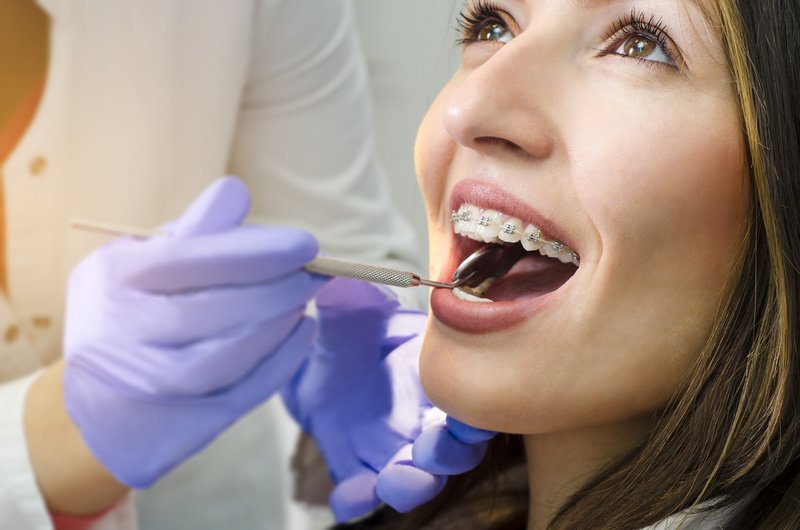
If you’re worried that you or your child might have an underbite, then it’s important that you speak with your orthodontist. But what is an underbite, exactly?
An underbite is a dental condition in which the lower teeth extend outward past the upper front teeth. This condition is also known as prognathism or Class III malocclusion.
Some instances of underbite can be severe and cause the lower teeth to extend very far. Other cases are milder and may not be very noticeable.
An underbite is more than just a simple cosmetic issue. While some people can get by with mild cases, a severe underbite can lead to several health problems.
If you’re interested in learning more about underbites and how to treat them, then you’ve come to the right place. Keep on reading and we’ll take you through everything you’ll want to know about underbites.
Causes of Underbites
The way that your teeth align might be affected by a variety of factors. Typically, teeth grow in such a way so that the upper teeth fit a bit over the lower teeth. Your molars should fit into one another.
Proper alignment of the teeth prevents you from biting your lips, cheeks, or tongue when you chew food.
Let’s go over some of the most common factors that can lead to an underbite.
Childhood Habits
Some habits from childhood might increase one’s risk for developing an underbite or other dental issue. Contributing factors to an underbite include long-term feeding from a bottle beyond infant years and pacifier use in children older than 3 years old.
Pushing on the teeth with the tongue and thumb sucking can also lead to an underbite.
Genetics
Most of the time, underbites are inherited. You are more likely to have an underbite if at least one other person in your family also has an underbite. Genetics will also decide the shape and size of a person’s teeth and jaw.
A person might be born with teeth that don’t fit properly together or are abnormally shaped, impacted, or very close together.
A cleft palate or lip might also be present at birth. All of these conditions can lead to an underbite.
Injury
If you sustain a severe injury to the face, then you may end up with permanent damage to your jawbones. Most of the time, it is possible to repair a broken jawbone. However, jaws do not always fit properly together after they are realigned surgically.
This can lead to an underbite.
Tumors
If you have a tumor in the mouth or on the jawbones, then your jaws might end up protruding. This can also lead to an underbite.
Underbite Treatment
Most people are not born with teeth that are perfectly aligned. Typically, teeth that are slightly misaligned don’t need any medical treatment.
However, fixing an underbite, especially one that is severe, can have major benefits.
First off, your teeth will be much easier to clean. This will reduce your risks for gum disease and tooth decay.
You’ll also feel less strain on the facial muscles, jaws, and teeth. This can lower your risks of breaking a tooth.
Medical Treatment
The only way to truly fix an underbite and align teeth properly is with medical treatment. At the very least, you can improve the appearance of an underbite with medical treatment.
In cases that are not severe, a dentist might be able to use plastic or wire braces or Invisalign aligners to move the teeth into their proper positions. Removing one or several teeth on the lower jaw might also help improve the look of an underbite if overcrowding of the teeth is part of the problem.
A dentist might also use a grinding device to smooth or shave down teeth that are sticking out.
In more severe cases, you may need to get surgery to fix the condition.
Underbite Surgery
Your oral surgeon should be able to properly correct your underbite. Several common methods of surgery to fix underbites include reshaping to shorten the lower jaw or lengthen the upper jaw.
In some instances, the use of screws, plates, or wires might maintain the proper shape of the jawbone.
Underbite for Toddlers and Children
The sooner an underbite is addressed, the better. If a child’s underbite is mild, then parents should wait until the child is at least 7 years old to seek corrective treatment, such as braces. This is when permanent teeth start to come in.
For short-term correction, facemask appliances can help ease lower front teeth into position in children. However, these individuals will still need a more permanent correction later in life.
If your child has a serious underbite, you may want to utilize early surgery. Talk to your child’s orthodontist to see what course of treatment is recommended.
The Importance of Treating Underbites
Hopefully, after reading the above article, you now have the answer to the question: what is an underbite?
As we can see, underbites can severely affect a person’s oral health as well as their overall well-being and facial appearance. By understanding what an underbite is and how to fix it, you can make better and more confident decisions about your health and the health of your loved ones.
Are you concerned about a possible underbite or other oral issues? If you are, then contact us today and see what we can do for you!




